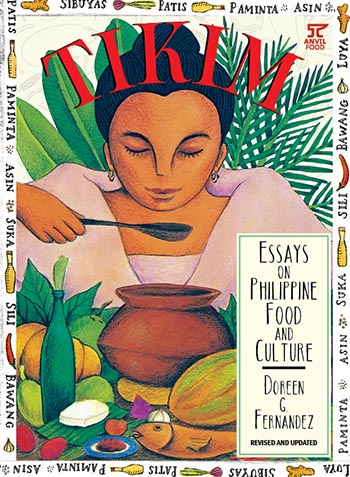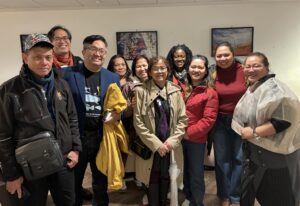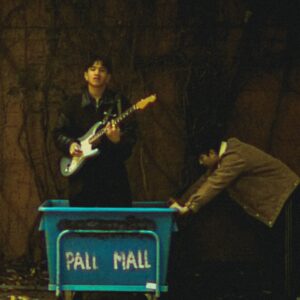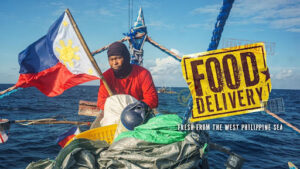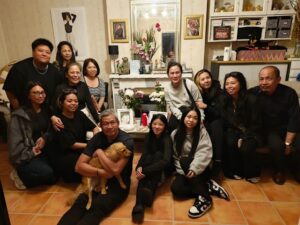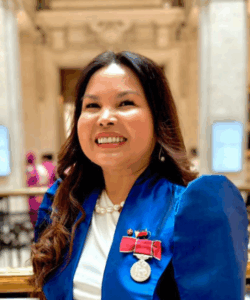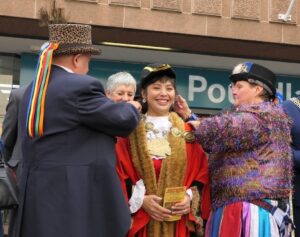In time for the London Book Fair happening this week, Nelson Turgo has come up with a solid list of books that Filipinos everywhere and those interested in Philippine history and culture should get their hands on.
It was 3 pm and I had been waiting to check-in to my room in a hostel in Gijon (Asturias, Spain). As I sat there contemplating what to do next, the Polish receptionist mentioned that she had been to Asia, not to the Philippines though, but to Thailand and Singapore. She asked me if I could recommend books that she could read whilst a visit to the Philippines was still a remote possibility. I stiffened. I could only mumble a couple of titles, and the first one that I mentioned, quite expectedly, was Jose Rizal’s Noli Me Tangere.
So here, I come up with a list, an eclectic enumeration of works that I love and admire, not just because of the scholarship involved and the way they were written, but also because I know some of the authors personally. And I thought that these works lovingly sing a lullaby to my country of birth, painting the kaleidoscope beauty of its complex people, landscape and history, its defeats and triumphs, and its hope for the future.
My list is an attempt to introduce you to and rekindle our love for our dear Philippines. In this epoch of corrosive fake news, the works I offer provide us with varying takes on Filipino life, but the truth they offer is always about, in the words of Milan Kundera “our struggle against power which is the struggle of memory against forgetting.”
1) Noli Me Tangere by Jose Rizal (translated into English by Soledad Lacson-Locsin, Bookmark 1996)

For obvious reasons, this fountainhead and originator of the genre of socio-realist fiction, and indeed, fiction and novelistic writing in the Philippines, comes first. If there is a national novel in the Philippines, this is it (along with the sequel). It narrates the life and struggles of Crisostomo Ibarra, upon his return after many years in Spain, to his hometown San Diego after the death of his father Don Rafael.
In the maelstrom of events that sucked him in in the course of his stay in the country, he discovers many disconcerting truths about himself, the cause of his father’s death, and his country. The characters are timeless and one of the most interesting (the likes of whom still populate contemporary Philippine society) is Doña Victorina de los Reyes de Espadaña.
Considering current events in the Philippines, and the engaged participation of young people in resisting historical revisionism, the novel offers a fitting quote: “Not all were asleep during the night of our forefathers.”
2) Isabelo’s Archive by Resil Mojares (Anvil 2013)

Resil Mojares is a gem and I cannot recommend him enough for his highly nuanced, theoretically informed, well-researched, and yet accessible writing. Among his many superb books (e.g., Waiting for Mariang Makiling and Brains of the Nation) I picked this one wherein his capabilities are on full display. Mojares is adroit in handling archival materials and bringing them to life. In this book, he discusses a kaleidoscope of topics, from historicising shame (which many Filipino politicians don’t have) to an intriguing entry about “The Book that Did not Exist.”
In this single book, you will know more about the Philippines´ history, people, and culture, more than any videos available online. The language is accessible and you could bring a copy with you on the plane whilst on transit from London to Manila. Once you arrive at the airport, after collecting your luggage, no one can fault you for heading out in search of other books by this Cebuano National Artist for Literature.
3) Necessary Fictions: Philippine Literature and the Nation, 1946-1980 by Caroline Hau (Ateneo de Manila University Press 2000)

When I first read this book, I spent so much time on every page because I had to think about some of the key passages over and over again. But the experience was so rich and rewarding that I ended up buying more of Caroline Hau’s books (and I am always on the lookout for her new publications).
This book tells us how works of fiction (including Rizal’s Noli Me Tangere) are part of our understanding of and relationship with nation and nationalism. It introduces other works of Filipino writers which you may not have heard before or thought of even as essential in your understanding of being Filipino, or indeed, of the Philippine nation. This is Hau’s solid contribution to Philippine scholarship.
4) Suri: Pag-arok sa Likhang Panitik/Probing the Literary Text by Bienvenido Lumbera (University of the Philippines Press 2017)

We are all diminished by the recent passing of ¨Itay¨, aka Bienvenido Lumbera, National Artist for Literature. Personally, he was my academic father. To many, he was more than a teacher, mentor, father to many academics and scholars alike, literary and movie critic, poet, scholar, librettist (he wrote the lyrics for the musicals Tales of the Manuvu, Rama Hari, Hibik at Himagsik Nina Victoria Laktaw, Noli Me Tangere, and more).
Suri, a collection of essays (in English and Filipino), includes many of his magnum opus in many diverse fields; it shows the depth and breadth of his scholarship. From discussing popular culture to nationalist literature, his penetrating gaze into the soul of the Philippine nation shines through. My favourite piece is his take on Filipino aesthetics which he masterfully laid out in three interconnected essays “Dating.”
5) Tikim: Essays on Philippine Food and Culture by Doreen Gamboa Fernandez (Anvil Publishing 1994, 2020; Brill 2020)

I love to eat and I love lechon (cuchinillo asado) so much that whenever I am in Madrid, I usually have a meal in Restaurante Botin. Anyway, Doreen Fernandez´s book is a splendid historisation of Filipinos´ love for food. In every essay, the reader is transported to a particular place, or event, like a fiesta, and is made to visualise the pomp and pageantry of our national palate.
Described by the New York Times as “Filipino food’s greatest champion,” Fernandez passed away in 2002 but her book has found a new audience among Filipino-American chefs in recent years. As a footnote from my former professor who happened to be a good friend of Fernandez, she advised me to visit El Ideal Bakery in Silay in Negros (the author´s hometown ) for its fabled pastries especially guapple pie. I already did. It was divine.
6) State of War by Ninotchka Rosca (Norton and Norton 1988, reissued by Anvil Publishing and Villarica Press)

This work of fiction introduced me to that much fabled genre called magic realism. It was the first novel by a Filipino published in the US by the publishing house behemoth Norton and Norton. That tells us much about the importance and literary merit of this novel, which runs the gamut of hundreds of years of Philippine history from the years of Spanish colonisation up to the tumultuous years of the Marcos dictatorship as mirrored in the lives of three young people: Adrian Banyaga, Eliza Hansen, and Anna Villaverde.
Ninotcha Rosca’s first novel is both tragic and funny; exhilarating and masterfully cinematic. It is divided into three chapters and my favourite is the second chapter ¨The Book of Numbers,¨ which covers the Spanish period and the early years of American occupation to provide a historical context to the first and the concluding section ¨The Book of Revelations.¨ I am so in love with this novel and cannot recommend it enough. The same with another novel Twice Blessed and two collections of short stories.
7) Culture and History by Nick Joaquin (Anvil Publishing 2014)

If truth be told, my first encounter with Nick Joaquin was via his short stories Summer Solstice and May Day Eve. I was a fan instantly. And in my puerile naïve days, I never thought that a writer, lest a Filipino, could write that way, and in English! For many, Joaquin was known for his fiction and journalistic reportage. He was first a journalist before turning into fiction. But as a historian, he was less appreciated, since as Resil Mojares puts it, “part of the eclipse can also be explained as a case of academic snobbery, one that assigns to those who are not professionally trained in the discipline and do not conform to its forms and conventions the lesser status of ´popularisers´ and ´amateurs´.”
This book is his take on many “unforgotten” issues of Philippine history and culture. Long before Ambeth Ocampo became popular with his writings about Rizal and his overcoat, and the women of his life, Joaquin was doing the same, though focusing on other aspects of Philippine history like the beatas of 17th-century Manila. Thus, whilst academic scholars were busy theorising nation and nationalism in their history books, he was writing about the Santo Niño of Cebu and the connection between the use of salt and identity. As a consummate prose stylist, his narrative style was as delightful as his handling of historical facts. And his love for San Miguel Beer (Pale Pilsen, please) was legendary.
8) The Songs of Salanda and Other Stories of Sulu by H Arlo Nimmo (University of Washington Press 1994)

I came across this book by American cultural anthropologist H. Arlo Nimmo. It is a collection of short stories based on his fieldwork amongst Bajau or Badjao (Sama Dilaut), sea gypsies, in Tawi-Tawi. The stories are magical. They are about us, Filipinos – stories of love and death, everyday struggle and triumphs as reflected in the lives of Bajaus.
They are about a people living in the peripheries and struggling to be heard in the cacophony of voices of nation-building. The stories were based on his data, and yet, Nimmo turned to the art of fiction to render their stories more heartfelt and real, and more immediate and at times, heartbreaking. Reading it, I thought this was what I wanted to do with my data for my PhD dissertation, with the life stories shared with me by fishermen, their wives, and their children, and the importance of the sea in their lives. I still have not done my own Songs of Salanda, unfortunately. For now, I thank Nimmo for this fine piece of ethnography.
9) Feast and Famine: Stories of Negros and La India, or the Island of the Disappeared and by Rosario Cruz Lucero (University of the Philippines Press 2003, 2012)

Whenever I am in the Philippines, I always try to meet up with Rosario Cruz Lucero. She was a former colleague and professor in one of my postgraduate classes in UP. She had a reputation. In the British parlance of marmite, you either like her or the reverse. She was exacting in her academic standards so much so that having her as a professor became a badge of honour for many students. I was one of them. And when I became her friend, and she started to share with me academic chismis, I became even prouder.
Lucero is not just a professor of Philippine literature and a fictionist, she’s also a cultural studies expert. This explains why reading her fiction, especially Feast and Famine and La India, gives the impression that the writer knows a lot about Philippine culture and history, especially the country’s epics, legends, and other pre-colonial material culture.
Her stories in the collections are suffused with the flotsam and jetsam of Philippine pre-colonial and colonial world. She could cite Alcina’s writing about the Visayans and in the same breath draw on the theory of Derrida’s deconstruction to move the plot to its cinematic conclusion. Lucero is, I think, one of the big secrets of Philippine contemporary literature. She is by and large known only in the literary and academic field and she deserves to be read by many, especially for her fiction.
10. The Flip Reader edited by Jessica Zafra (Anvil Publishing 2008)

Reading this book transported me to one morning when I boarded a boat in the Pasig River to experience other unseen parts of Manila as part of a creative class on essay writing with Ambeth Ocampo. Ocampo said by seeing places in a different light, this time on a boat in Manila’s famed water way, it could help us refine our writing.
With us that morning was the author, Jessica Zafra, in black, wearing boots and a pair of intimidating eyeglasses. She was very funny and I will use the word again, intimidating. She said we should all aspire to world domination. This book is a manifestation of that attempt. We Filipinos try to dominate the world in so many different funny ways, in many countries, all over the world. I especially like Zafra’s encounter with a Filipina émigré in Rome. Grab a copy of this book and you could find yourself in one of the essays. And if you are a foreigner, maybe you’ll understand us more. For the better, I hope.
About the author

Nelson studied at the University of the Philippines and Cardiff University in Wales. He currently works as Research Associate at the Seafarers International Research Centre (SIRC) based within the School of Social Sciences, Cardiff University. The Centre has a particular emphasis on issues of occupational health and safety. It is the only international research facility of its kind and has built up unparalleled experience of research in this field. Nelson grew up in a fishing community in Mauban, Quezon.

